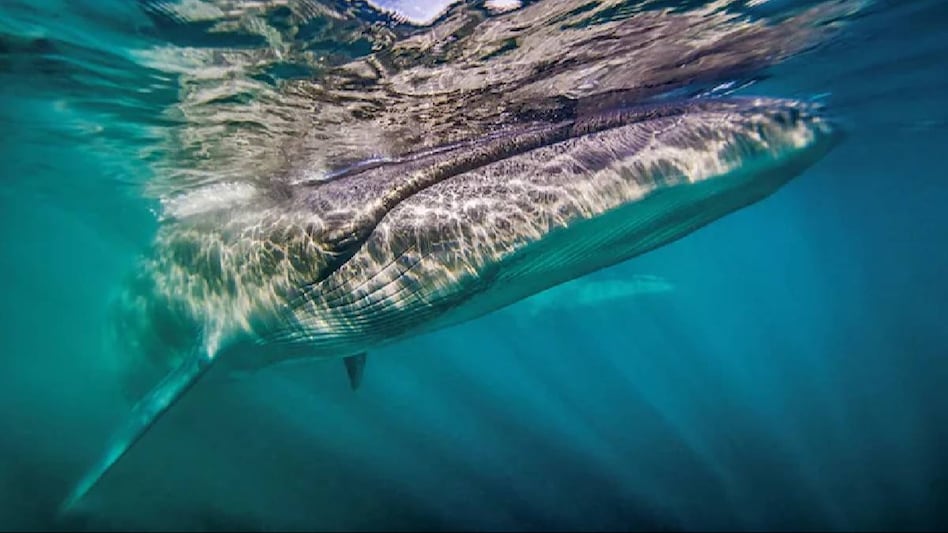"Dream, Dream, Dream! Conduct these dreams into thoughts, and then transform them into action."
- Dr. A. P. J. Abdul Kalam
"Dream, Dream, Dream! Conduct these dreams into thoughts, and then transform them into action."
- Dr. A. P. J. Abdul Kalam
16 May 2024
In a heartening turn of events, sei whales, once nearly driven to extinction by commercial whaling in the early 20th century, have made a remarkable comeback in Argentine waters. Decades after their disappearance, sightings of these majestic creatures have sparked hope among conservationists and marine biologists, showcasing the resilience of the species and the effectiveness of international efforts to protect marine life.
Sei whales may be found worldwide in temperate, subtropical, and subpolar seas. The Norwegian term for pollock, "seje," is where the name "sei," which is frequently associated with pollock, originates.Due to previous commercial whaling in the 19th and 20th centuries, the number of sei whales worldwide was drastically reduced. For their flesh and oil, an estimated 300,000 sei whales were murdered. In 1975 and 1979, member nations of the International Whaling Commission (IWC) decided to stop hunting sei whales in the North Pacific and the Antarctic. The IWC made the decision in 1982 to stop commercial whaling on all whale species and populations starting in the 1985–1986 season. Whaling of this species is still practiced in Japan, despite the fact that it is no longer a serious danger. Sei whales are now most threatened by vessel collisions and entanglement. The Marine Mammal Protection Act designates the sei whale as depleted, and the Endangered Species Act lists it as endangered.
The sei whale, a member of the baleen whale family, was once abundant in the waters off Patagonia. However, the advent of commercial whaling in the early 20th century took a devastating toll on their population. These gentle giants, reaching lengths of up to 20 meters, were targeted for their valuable oil and meat, leading to their near-extinction in the region. After decades of absence, sightings of sei whales have been reported in recent years, sparking hope among conservationists and marine biologists. These sightings are proof of the species' remarkable resilience and the effectiveness of international efforts to protect whales and their habitats. These giant blue-grey sei whales have triumphantly returned to the waters off the coast of Argentina.Sei whale numbers were severely destroyed by whaling ships operating off the coast of Argentina and beyond in the 1920s and 1930s, leading to the eventual extinction of the species.

A Sei whale is pictured after scientists identified the endangered species on Argentina's Patagonia coast
for the first time since 1929.
(Source: Google Images)
A Long Awaited Comback~
Their amazing comeback has been made possible by the worldwide prohibitions on commercial whaling that have been in place for the past few decades. "They vanished due to hunting; they did not go extinct but rather were so small that nobody saw them," said Mariano Coscarella, a marine ecosystem researcher and biologist at CONICET, an Argentine scientific organisation. "In this case, it took over 80 years for them to have appreciable numbers for people to realise they were there." Because they spawn every two to three years, sei whales—which are distinguished by their enormous size and unique blue-grey coloring—have helped to slowly but steadily rebuild their number over the past century. Their recent sightings off the coast of Patagonia show how successful conservation initiatives can be when given enough time and dedication. With support from the National Geographic Pristine Seas project, Coscarella's team fitted five sei whales with satellite trackers last month in order to monitor their movement patterns.They documented the whales' return to these once-known seas by filming them from boats, drones, and underwater. Coscarella declared, "We can consider this a success of conservation on a global scale," attributing the species' comeback to the worldwide ban on whaling.